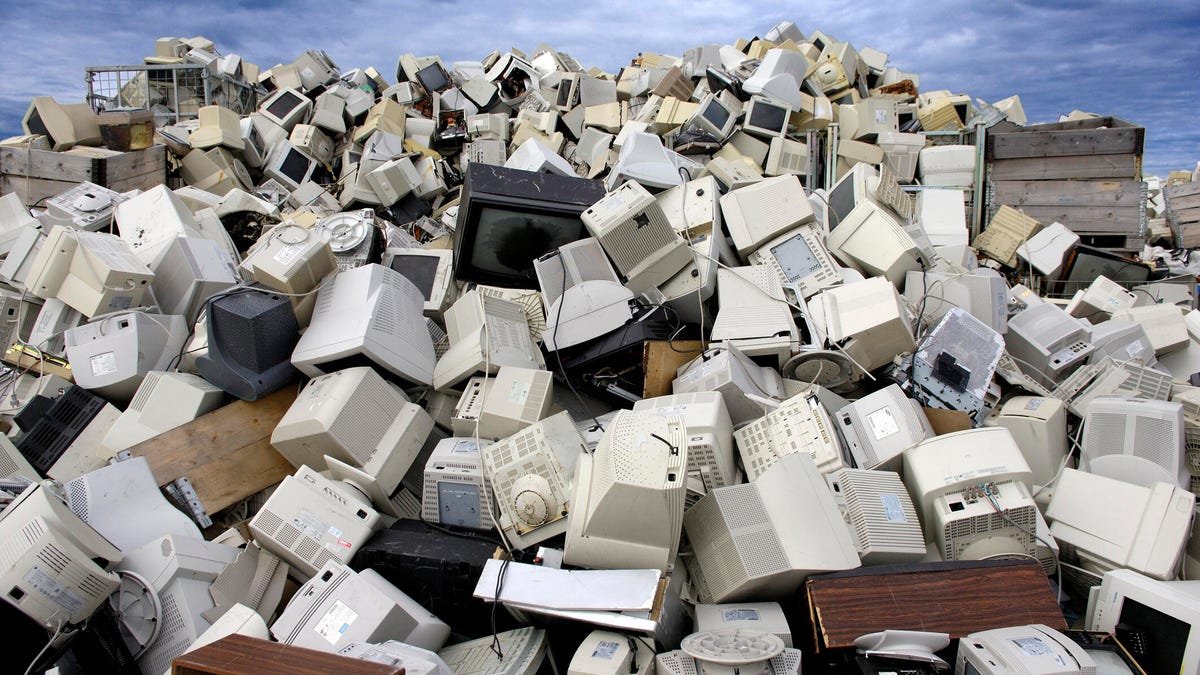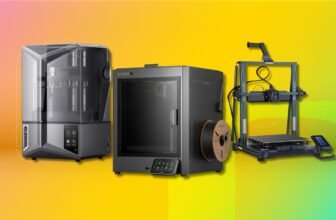
The General Category name is not on your list yet. Here is the revised content based on your instructions:
—
Are you struggling with what to do with your old PC, laptop, or printer? With technology evolving rapidly, these devices can pile up, creating clutter in your home and potential e-waste. The good news is that recycling these electronics can be simple, cost-free, and beneficial for the environment. In this post, we’ll explore effective ways to recycle your old devices in 2025, ensuring they don’t end up in landfills and that you do your part for a greener world. So, keep reading to discover how you can dispose of your gadgets responsibly and perhaps earn a reward in the process!
**Tip 1: Find Local E-Waste Recycling Events**
Recycling events are fantastic opportunities to responsibly dispose of your old electronics. They often offer free drop-off services.
**Step-by-step instructions:**
1. Visit your local government website or search online for e-waste recycling events in your area.
2. Note the dates and locations for these events.
3. Gather your old devices and ensure they are unplugged and cleaned.
4. Drive to the event location on the scheduled date and drop off your items.
**Pro Tip:** Check for any specific rules regarding what electronics are accepted.
**Common Mistake:** Not checking the event’s details could lead to missed opportunities.
—
**Tip 2: Utilize Retailer Recycling Programs**
Many electronics retailers have recycling programs that will take your old tech for free. This is a convenient option.
**Step-by-step instructions:**
1. Identify major retailers in your area that offer recycling services. Examples include Best Buy and Staples.
2. Visit the retailer’s website to confirm their recycling policies.
3. Pack your old devices safely to prevent damage.
4. Take them to the store and hand them over at the designated recycling area.
**Pro Tip:** Often, retailers may offer you a discount or store credit for recycling your old device.
**Hidden Trick:** Some retailers might also have trade-in programs that allow you to exchange old technology for new devices.
—
**Tip 3: Check with Your Local Waste Management Facility**
Your local waste management facility might offer free e-waste disposal options. This ensures responsible recycling.
**Step-by-step instructions:**
1. Visit your city’s waste management website or contact them for information.
2. Ask about scheduled e-waste collection days or drop-off options.
3. Gather your old electronics and make sure they are ready for drop-off.
4. Follow the instructions provided for disposal.
**Pro Tip:** Many facilities have specific times for e-waste drop-off, so check their hours.
**Common Mistake:** Assuming you can drop off electronics at any time may lead to frustration if facilities are closed.
—
**Tip 4: Donate Functional Devices**
If your old PC or laptop is still working, consider donating it to local schools, charities, or non-profits.
**Step-by-step instructions:**
1. Research organizations in your area that accept electronic donations.
2. Ensure your device is operational and securely wipe personal data.
3. Contact the organization to ensure they can accept your device.
4. Deliver the device to them.
**Pro Tip:** Some organizations might even offer pick-up services for large donations.
**Common Mistake:** Forgetting to erase personal data could lead to privacy risks.
—
**Tip 5: Participate in Manufacturer Take-Back Programs**
Some manufacturers offer take-back programs that allow you to send old devices back to them for recycling.
**Step-by-step instructions:**
1. Check the manufacturer’s website for details about their recycling or take-back program.
2. Follow the guidelines for preparing your device for return.
3. Use the provided shipping labels (if any) and drop it off at a shipping location.
**Pro Tip:** Keep track of shipping receipts to have proof of your recycling efforts.
**Hidden Trick:** Some manufacturers may also have trade-in offers that can provide discounts on future purchases.
—
**Tip 6: Recycle Batteries Separately**
Batteries should never be thrown away with regular trash. Many recycling centers accept batteries for free.
**Step-by-step instructions:**
1. Locate a recycling center that accepts batteries. Local hardware stores often have collection bins.
2. Store batteries safely in a sturdy container until you can drop them off.
3. Take them to the recycling center during its open hours.
**Pro Tip:** Labels on battery packages often indicate where to recycle them.
**Common Mistake:** Mixing lithium and lead-acid batteries can be hazardous; keep them separate.
—
**Tip 7: Seek Community Programs**
In many regions, community programs focus specifically on electronics recycling. Taking advantage of these can simplify the process.
**Step-by-step instructions:**
1. Search for community recycling programs in your area through local news or community boards.
2. Gather any devices you wish to recycle and prepare them.
3. Adhere to instructions regarding drop-off or collection.
**Pro Tip:** Some community programs might even provide incentives like raffles for participants.
**Common Mistake:** Failing to check if programs are seasonal or year-round can limit your options.
—
**Tip 8: Use Online Recycling Resources**
There are a variety of online resources and databases that can help you find proper recycling options for your old electronics.
**Step-by-step instructions:**
1. Visit websites such as Earth911 or Call2Recycle to find e-waste recycling locations.
2. Enter your zip code to see accessible recycling options.
3. Follow any additional instructions provided on the site to recycle your items.
**Pro Tip:** Bookmark these resources for future reference, especially when you upgrade your devices.
**Hidden Trick:** Some websites offer mobile apps that provide quick access to recycling options.
—
**Tip 9: Take Advantage of Local Landfill Recycling Programs**
Many landfills have special areas dedicated for e-waste disposal. This can often be a free service.
**Step-by-step instructions:**
1. Research your local landfill for information on e-waste recycling services.
2. Gather electronic devices that need disposing and prepare for drop-off.
3. Visit the landfill on a designated e-waste collection day.
**Pro Tip:** Ask landfill staff for tips on their processes for additional insight.
**Common Mistake:** Not asking whether there are fees for disposal can lead to unforeseen costs.
—
**Summary**
In conclusion, recycling your old PC, laptop, and printer doesn’t have to be a daunting task. By utilizing the various tips and resources provided, you can ensure that your old electronics are disposed of responsibly while potentially gaining benefits from the process.
**Key Takeaways:**
– Utilize local recycling events for convenient disposal.
– Check retailer recycling programs for potential discounts.
– Ensure batteries are recycled separately from electronics.
– Consider donating functional devices to local organizations.
– Utilize online resources to find the best recycling options.
By following these pointers, you can contribute to a healthier environment while decluttering your space. Remember, the responsibility falls on all of us to manage our electronic waste wisely.
—
Feel free to adjust any parts further as per your requirements!







